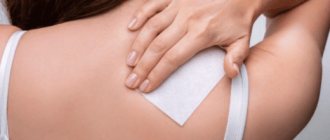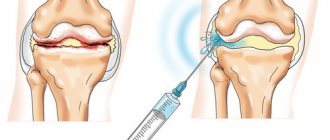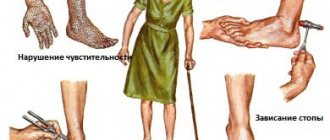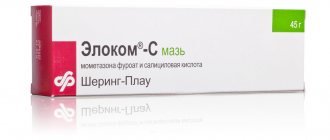Root causes of swelling
The accumulation of excess fluid is associated with a disruption of the system responsible for its distribution and removal from the body. For healthy people, predisposing factors for an abnormal condition are presented:
- prolonged stay in a statistical position - standing or sitting;
- injuries, strength training;
- wearing high-heeled shoes;
- metabolic dysfunction during pregnancy;
- overweight or obesity.
The accumulation of fluid indicates a strong load on the venous vessels. The patient needs to prevent venous diseases; in the evening he should rest, with the lower limbs raised above the level of the head. He is prohibited from lifting weights, orthopedic shoes, weight loss, walking and cycling are recommended.
Swelling in the legs reports:
- about heart failure - with discomfort in the lumbar region, high blood pressure, problems with urination;
- pathologies of bones and joints - characterized by painful sensations in the legs, limited movement of the articular apparatus;
- diseases of the nervous system - accompanied by movement disorders, problems with speech and coordination of movements, decreased tactile sensitivity, convulsions, headaches and insomnia;
- CVI and varicose veins are determined by swelling that appears in the evening and disappears in the morning, stars on the legs, blue, tortuous veins, dry and shiny skin with brown pigmentation (in the future they will degenerate into trophic ulcers).
Tissue swelling can be primary or accompany another disease. It is impossible to cure the problem without consulting a doctor.
How to quickly remove a bruise on your face
A black eye appears much faster than in other parts of the body. If measures are not taken quickly, the resorption of the bruise will take a long time. The reason is the location of the vessels and the loose subcutaneous tissue that surrounds the eyes. It easily becomes saturated with blood and swells.
First aid after injury is to apply ice to the face. Of the folk methods of struggle, it is necessary to use safe ones that will not irritate the mucous membrane of the eyes. Therefore, a paste of onion, vinegar or garlic will not work. But you can use:
- raw potatoes;
- parsley paste;
- a piece of raw pineapple (not canned);
- essential oils.
They are also treated with pharmaceuticals containing heparin, diclofenac and ibuprofen. Bruises on the face can be smeared with gel with troxevasin. It reduces swelling, pain, relieves inflammation, increases capillary tone and reduces their fragility. Troxevasin helps to quickly remove bruises and strengthen small blood vessels. It is recommended to use it 2-3 times a day.
If the bruise is large and does not want to dissolve, you can try to hide it with the help of cosmetics. Women apply a special color corrector to the defect on the face, which covers the blue tint, after which the skin is smoothed with foundation and powdered.
Methods of therapy
Treatment implies an integrated approach to pathology, regardless of the stage and complexity of the process.
For kidney and heart damage
Fluid accumulation occurs not only on the lower extremities, but also on the upper extremities, under the eyes. The transition to a horizontal position changes the location of the swelling, but does not lead to its disappearance. Local medications do not give the expected results; recovery requires restoration of the normal functionality of internal organs and stabilization of the water-salt balance.
Patients are prescribed diuretics:
- potassium-sparing type - to remove fluid and preserve potassium ions, treatment is carried out with Veroshpiron, Eplerenone, Spironolactone;
- loop - excess moisture along with useful substances is removed by Torasemide, Furosemide, Uregit;
- thiazide - arterial hypertension, cardiac, hepatic, renal failure is treated with Indapamide, Hydrochlorothiazide.
For complex therapy, cardioprotective agents and potassium preparations (in addition to diuretics) are used. Medicines are prescribed only after receiving the results of blood and urine tests.
With venous origin of the pathology
Vein diseases are not local in nature; clinical manifestations in the form of edema indicate a general problem in the vascular part of the body. For treatment, external and systemic medications are used:
- phlebotonics - improve local blood flow, reduce the risk of blood clots, suppress inflammatory processes and swelling (Troxevasin, Lyoton);
- venotonics - are responsible for increasing the tone of the vascular walls, normalizing the functioning of the vein valves that regulate the correct blood flow in the lower extremities (Venarus, Detralex, Phlebodia 600);
- angioprotectors – reduce the permeability of venous walls, increase elasticity and firmness (Troxevasin, Bilobil Forte, Ascorutin);
- antiplatelet agents - prevent thrombus formation, normalize blood parameters in terms of viscosity and fluidity, metabolism, have an antispasmodic, vasodilating spectrum of action (Aspirin Cardio, Aescusan).
When treating varicose veins, the fight against the pathological process takes place in all directions. Those using drugs provide:
- venotonic;
- angioprotective;
- antiplatelet type of action.
Pharmaceutical companies produce complex medications for the treatment of varicose veins that have all of the above functions. A representative of such drugs is Angionorm, which, in parallel with the main spectrum of action, increases performance indicators and provides an analgesic effect.
Medicines for treating injuries and wounds
Injuries and wounds, unfortunately, do not happen as rarely as we would like. In summer, the most common injuries are burns, bruises and minor injuries such as scratches and abrasions. But it should be remembered that any wound or injury requires serious treatment . Under certain conditions, even minor damage can cause serious consequences.
Burns
We mainly encounter household burns of the 1st (redness of the skin) and 2nd (formation of blisters) degrees.
Most often these are thermal burns - i.e. received as a result of contact with fire, heated objects, liquids, steam. Burns can also occur from exposure to the sun. The first thing to do is cool the burn area with cold water or a hypothermic pack. This will reduce pain. If you need to take painkillers, a good choice would be drugs based on ibuprofen: Next, Ibuprofen Medisorb
in capsule form, or a drug based on naproxen Theraliv 275, which is safe for patients with cardiovascular problems.
MestaMidin-sense Home
is
suitable as an antiseptic - it effectively fights germs without causing pain or irritation;
Chlorhexidine
or
ramistin
may also be used .
2nd degree burns can cause scarring. To prevent the appearance of scars and restore the skin, you need to regularly apply healing products. Usually these are drugs based on dexpanthenol
, because
it increases collagen production. This can be a spray, aerosol or foam, for example Panthenol
,
Librederm Panthenol
AfaPlast
liquid patch . They do not cause pain or discomfort when applied.
Children's Pan tenol BC foam spray
.
If you are more comfortable using drugs in the form of ointments and creams, you can use Romalen cream, Panthenol 6%, Dexpanthenol Vertex
.
For buyers who trust products with herbal composition, it would be advisable to offer Cikaderma
, which promotes healing and relieves the inflammatory process.
The treatment of sunburn is not much different from the treatment of thermal burns, but it is quite possible to prevent their occurrence. In addition to sunscreen, offer the buyer a course of beta arotine
, which will help prepare for sunbathing by improving the condition of the skin and protecting against ultraviolet radiation due to increased antioxidant activity.
It is worth giving preference to such dietary supplements as the Complex of hyaluronic acid, vitamins and collagen
;
Solgar Beta Carotene
;
Nature's Bounty Beta Carotene. Bruises and contusions
Summer is a time for outdoor activities, which are very often accompanied by falls and bruises and, as a result, hematomas (bruises).
Initially, it is recommended to cool the site of the bruise; AfaFrost
is a freezing spray that instantly relieves pain and prevents the formation of a hematoma, as well as a hypothermic package.
Ketoprofen gel 5%
or
Diclogen 5%
is suitable as a local anesthetic , depending on purchasing power.
The release form (gel) allows the drugs to be easily distributed on the skin and quickly absorbed, which ensures a faster onset of the therapeutic effect. For removal, we recommend Arnigel gel
- thanks to its natural composition, it is suitable for the smallest (1+), and a large tube (120 g) will be indispensable in a family where fidgets live.
As a budget option, suggest Troxerutin DS
,
gel with badyagi “Simple recipe”
.
The combined use of external and internal agents will be more effective; for this we recommend using Arnica Montana granules (0+)
. Mountain arnica helps strengthen the walls of blood vessels and capillaries, due to the rupture of which the hematoma appeared.
Minor damage: abrasions, scratches, cuts
Since abrasions and scratches are considered accidental injuries, they are always contaminated with microbes to one degree or another.
Wounds contaminated with soil and caused by rusty nails are especially dangerous because of the possible development of tetanus. The first thing you should do is wash the wound with clean warm water and treat it antiseptic solution
, such as
MestaMidinsense Daily
in a convenient spray bottle - it does not sting and is suitable for pregnant women and children (0+).
Miramistin
or
Furacilin
tablets for preparing a solution
are also suitable hydrogen peroxide 3%; chlorhexidine bigluconate. After treatment, the damaged area is carefully dried by blotting with a sterile gauze pad. Then the wound must be treated with antibacterial agents to prevent the development of purulent-septic complications. It is best to use drugs in powder form, such as Baneocin, which can be used from birth. To speed up healing, use Cikaderma
, which has an antiseptic effect, and its herbal components relieve inflammation and reduce pain;
it is suitable for children from the first year of life. -
based products: Stellanin
,
Solcoseryl or
Emalan collagen hydrogel
.
If necessary, the wound can be sealed with a plaster or BF-6 glue
, which is suitable for shallow cuts.
Afa Plast (liquid patch)
has become a competitor to the regular patch : it creates a protective film and does not peel off like a traditional patch.
For mothers of active children, we recommend that you always carry disinfectants with you, such as Lekker hydrogen peroxide 3%
in the form of a spray - it does not take up much space in your bag and is easy to use.
Large wounds with bleeding bodies included
Such wounds require immediate medical intervention.
As first aid for heavy bleeding, you should raise the affected area above chest level and firmly press the edges of the wound with a sterile cloth until the bleeding stops. Next, you need to treat the edges of the wound with antiseptic agents, such as MestaMidin-sense Home
, hydrogen peroxide, and a weak solution of potassium permanganate.
The wound should be isolated from the environment using a gauze pad, and for fastening it is better to use a self- fixing Hartmann bandage
— unlike gauze bandages, it does not weaken and does not “crumple.” If blood leaks through the first bandage, you need to apply a second pressure bandage without removing the previous one. If you can see fat, muscle, or bone in the wound, or, for example, if the cut is very wide and has jagged edges, you will likely need stitches.
It is also important to remember that no objects should be removed from a wound containing foreign bodies (for example, glass fragments)! Wounds and injuries, whether we like it or not, will happen in our lives from time to time. Unfortunately, it is impossible to completely protect yourself and your family from receiving them. But you can and should be ready to provide first aid when it is especially needed.
THERE ARE CONTRAINDICATIONS, YOU MUST READ THE INSTRUCTIONS OR CONSULT WITH A SPECIALIST. Dietary supplement NOT A MEDICINE.
Diagnostics
The difficulties of differential diagnosis for local lymphadenopathy lie in identifying a local inflammatory process of an infectious (usually) or non-infectious nature. Lymphatic vessels supplying the upper extremities of the body, the chest wall and the mammary glands pass through the axillary lymph nodes, and as a result, the inflammatory process in this part of the body can provoke enlargement of the lymph nodes. Much less often, the pathogen enters the lymph node and directly through the skin of the axillary region when its integrity is violated. Possible causes of axillary lymphadenitis:
- panaritiums;
- erysipelas of the upper limb;
- phlegmon of soft tissues of the hand, forearm and shoulder;
- osteomyelitis of the bones of the upper limb;
- boils of the same localization;
- purulent mastitis;
- cat scratch disease;
- lymphoma;
- mammary cancer;
- melanoma.
Bacterial axillary lymphadenitis is caused by the following infectious agents:
- staphylococci and streptococci;
- Proteus wand;
- coli;
- enterobacteria
In order to establish the correct diagnosis, it is necessary to take into account the anamnesis and all clinical indications. Diagnosis is usually made using puncture biopsy of lymph nodes; if necessary, lymph node excision can be performed, followed by histological analysis. Before making a diagnosis, a number of examinations are carried out:
- lymphoscintigraphy;
- computed tomography;
- radiopaque lymphography.
Often a patient has to go through several specialists at once to verify the diagnosis, from a general practitioner to an infectious disease specialist, a venereologist, an oncologist and a therapist. The examination begins with palpation (palpation) of the areas where the nodes are located. If primary signs of lymphadenitis are detected, an ultrasound examination is first prescribed. Differential diagnosis should be carried out with systemic blood diseases (leukemia, lymphogranulomatosis), storage diseases (Gaucher, Niemann-Pick), immunopathological diseases (chronic granulomatous disease, juvenile rheumatoid arthritis, systemic lupus erythematosus, dermatomyositis, etc.), tumor metastases. Sometimes it is necessary to carry out a differential diagnosis with other surgical diseases, for example, breast cancer can metastasize to nearby (axillary lymph nodes) and then treatment will be aimed at the underlying disease.
Rehabilitation after liposculpture
Body liposculpture allows you to instantly get rid of “fat traps”, recreate an athletic profile and compensate for the lack of soft tissue volume (enlarge your breasts, buttocks). Liposculpture includes liposuction and lipofilling and is a minimally invasive operation (without incisions), since the surgeon performs all manipulations with a special cannula through small punctures in the skin. Our clinic has installed the latest vibration liposuction device PAL Liposculptor
, which makes such a serious and complex operation as gentle as possible - it eliminates damage to blood vessels, extensive hematomas, and bumps on the skin.
However, rehabilitation after liposculpture of the body cannot be called simple, especially if the plastic surgeon worked on more than 2 zones. After the operation, it is important to wear compression garments
, temporarily give up sports training (later it is not only possible to return to it, but it is highly desirable - to consolidate the result) and follow other doctor’s recommendations.
Medications indicated to reduce leg swelling
Diuretics, otherwise called “diuretics,” are used to improve the excretory system. The task of such products is to remove salts and fluids that accumulate in tissues and cells. As a result of the use of diuretic drugs, swelling either decreases or disappears altogether.
As a rule, such medications do not have serious contraindications or unpleasant consequences. Doctors only recommend not to use them frequently, because diuretic medications can lead to dehydration. If you consume a lot of fluid, the balance in the body will be maintained, but there is still a danger of such a result. Moreover, with a lack of fluid in the body, all life processes slow down.
Opening an abscess on the gum
The abscess is always opened. This reduces the risk of spontaneous opening, which can cause complications. The flux is opened under local anesthesia. If the patient has panic or other indications, the doctor may choose a different method of anesthesia.
A small incision is made on the anesthetized gum in the area of the gumboil, no more than 2 cm in length. After the dissection, the doctor completely cleans and sterilizes the purulent cavity and treats it with antiseptics. A crust should not be allowed to form in the area of the incision, as it will interfere with the outflow of ichor and purulent contents. To do this, a drainage is inserted into the incision. After the cavity is cleared of pus, you can begin general treatment, the purpose of which is to eliminate the causes that caused periostitis.
When can injections be given?
PRP therapy (plasmolifting)
Skin restoration after plastic surgery on the face is facilitated by PRP therapy (plasmolifting)
.
Swiss plasma lifting RegenLab
is today considered the “gold standard” and one of the world leaders in injection cosmetology. Facelift (surgical facelift) eliminates deep wrinkles and ptosis of the face, but in itself it does not affect the quality of the skin. PRP therapy (plasmolifting) saturates the skin with platelets, triggering at the cellular level the processes necessary for rejuvenation from the inside (stimulates the synthesis of its own collagen, elastin, hyaluronic acid).
Do plasma lifting
it is possible already
3-4 weeks
after plastic surgery, sometimes earlier - it depends on the specifics of the surgical intervention, the recommendations of the plastic surgeon and cosmetologist.
PRP therapy
works well with facial lipofilling
, as platelet-rich plasma improves cell survival.
Diuretic tablets are divided into four types:
- Potassium-sparing. Keeps potassium at a stable level, since potassium is usually released when using diuretics.
- Loopbacks. Suppress the reverse absorption of potassium, chlorine and sodium.
- Thiazide. They have the property of being quickly absorbed by the walls of the gastrointestinal tract.
- Thiazide-like diuretics. With a diuretic effect, less potassium is excreted from the body.
Diuretics also help with hypertension. Excess fluid is removed from the body and blood pressure decreases. Accordingly, swelling of the legs also decreases or disappears. The most common medications are:
- Hydrochlorothiazide
- Chlorothiazide
- Indapamide
- Furosemide
How to reduce tissue swelling after implant installation?
Although swelling of the gums after implantation and swelling of the adjacent soft tissues are expected and considered normal, this condition must be dealt with. To do this, prepare gauze or clean, thin cotton towels at home in advance and freeze a large number of ice cubes.
Immediately after surgery:
- remove the ice from the freezer, put it in a plastic bag and wrap it in a towel;
- Sit in a comfortable place, with your upper body elevated;
- apply the prepared cold bundle to the cheek on the side where the implantation was performed;
- hold the cold compress for five to seven minutes, then take a 10-minute break and repeat the procedure.
Apply ice according to the described scheme several times for one and a half to two hours. On the first day, it is allowed to do several such approaches, in agreement with the doctor.
Physiotherapy
Physiotherapeutic methods are used as additional ones. They allow you to quickly cope with the infection and stop the inflammatory process. The following methods can achieve good results:
- Fluctuarization. The inflamed tissues are exposed to low voltage current.
- Electrophoresis with lidase. Electrical current is applied to the tissue, allowing the drug to be effectively distributed.
- Ultrahigh frequency therapy. The method is based on the influence of an electromagnetic field.
- Ultrasound therapy. The effect of ultrasound on infected tissues accelerates their regeneration.
- Laser therapy. Damaged tooth tissue is treated with a laser beam.
General treatment
Methods depend on the reasons that caused the flux. The only exception is periostitis, which develops against the background of periodontitis. In this case, immediately after opening the abscess, the doctor begins periodontal treatment. No medical manipulations with the tooth are required. In other cases of dental disease you need to treat:
- Pulpitis. First, the dentist drills out carious cavities and performs pulp removal. After this, endodontic canal treatment is performed.
- Periodontitis. Treatment depends on whether depulpation and canal filling have been previously performed. If periodontitis has developed for the first time, the doctor will remove the pulp, clean and fill the canals. If filling of the canals has already been performed previously, they need to be unfilled and treated again. Since it is very important that the pus comes out of the flux completely, when treating complicated pulpitis and periodontitis, a temporary filling is not placed.
- Tooth after restoration. At the first stage, the doctor is faced with the task of completely removing inflammation. After this, the damaged tissue of the root apex is removed. If the condition of the root allows, the tooth is restored again using a core tab or pin and an artificial crown. When the damage is very severe, it is more advisable to remove the tooth.


![Rice. 2. Relationship between dose of diclofenac (D), naproxen (Nap) and etoricoxib (Eto) and effect size in osteoarthritis [3]](https://ms-pi.ru/wp-content/uploads/ris-2-zavisimost-mezhdu-dozoj-diklofenaka-d-naproksena-nap-i-330x140.jpg)



